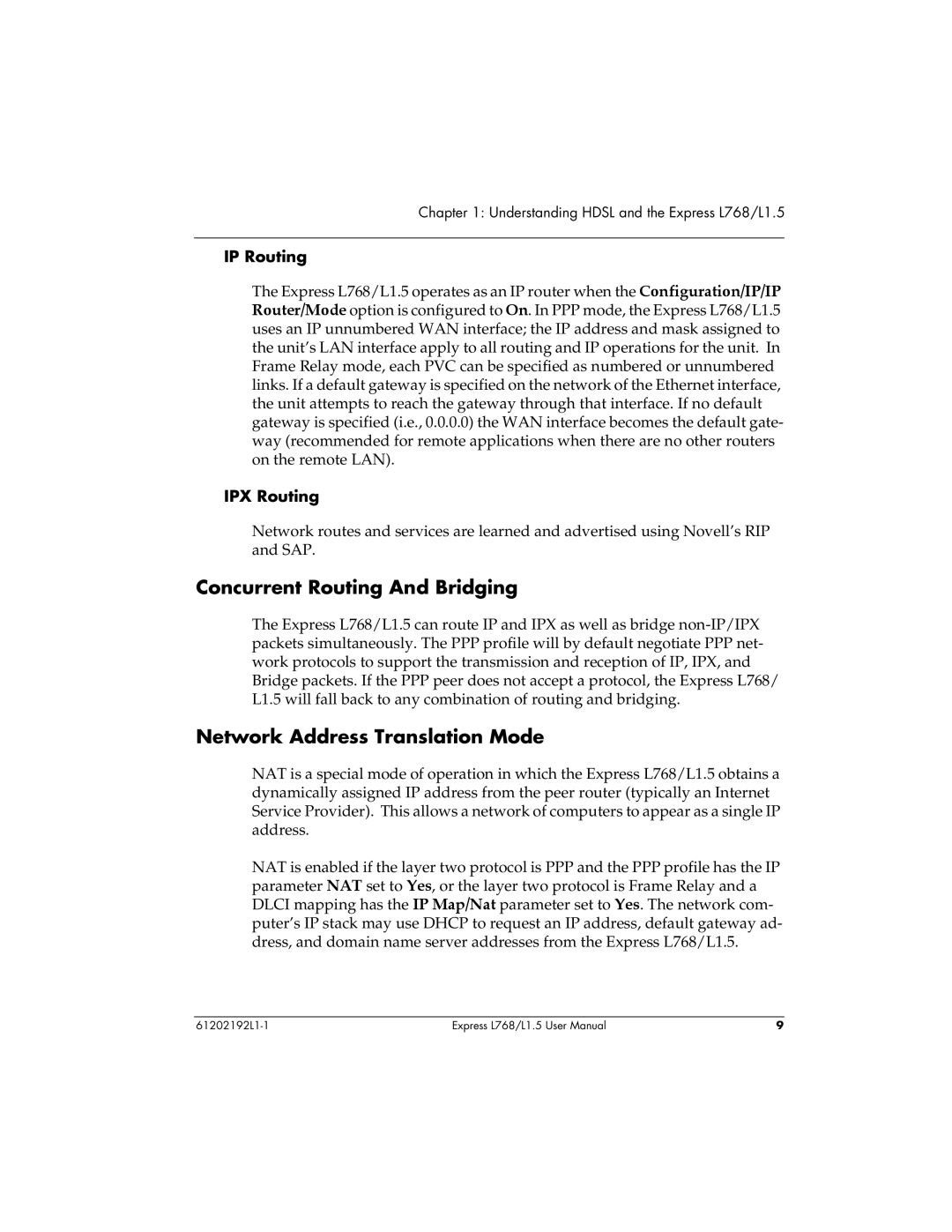
Chapter 1: Understanding HDSL and the Express L768/L1.5
IP Routing
The Express L768/L1.5 operates as an IP router when the Configuration/IP/IP Router/Mode option is configured to On. In PPP mode, the Express L768/L1.5 uses an IP unnumbered WAN interface; the IP address and mask assigned to the unit’s LAN interface apply to all routing and IP operations for the unit. In Frame Relay mode, each PVC can be specified as numbered or unnumbered links. If a default gateway is specified on the network of the Ethernet interface, the unit attempts to reach the gateway through that interface. If no default gateway is specified (i.e., 0.0.0.0) the WAN interface becomes the default gate- way (recommended for remote applications when there are no other routers on the remote LAN).
IPX Routing
Network routes and services are learned and advertised using Novell’s RIP and SAP.
Concurrent Routing And Bridging
The Express L768/L1.5 can route IP and IPX as well as bridge
Network Address Translation Mode
NAT is a special mode of operation in which the Express L768/L1.5 obtains a dynamically assigned IP address from the peer router (typically an Internet Service Provider). This allows a network of computers to appear as a single IP address.
NAT is enabled if the layer two protocol is PPP and the PPP profile has the IP parameter NAT set to Yes, or the layer two protocol is Frame Relay and a DLCI mapping has the IP Map/Nat parameter set to Yes. The network com- puter’s IP stack may use DHCP to request an IP address, default gateway ad- dress, and domain name server addresses from the Express L768/L1.5.
Express L768/L1.5 User Manual | 9 |
